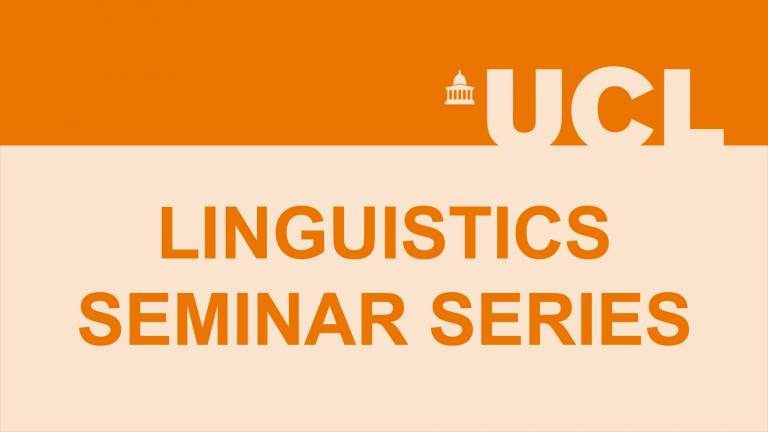Linguistics Seminar - Caroline Fery
24 March 2021, 5:00 pm–6:30 pm

Two prosodic origins of discontinuous nominal phrases
Event Information
Open to
- All
Organiser
-
Richard Jardine
Seminar Title: Two prosodic origins of discontinuous nominal phrases
Abstract: The data presented in this talk come from a survey of discontinuous nominal phrases (DNP) in a large number of languages, both from a syntactic (around 300 languages) and a prosodic perspective (around 100 languages), that will be published in Fanselow & Féry (in prep).
The probably best-known origin of DNP is related to discourse structure: the fronted part of an NP is a topic or a focus and the second part is a focus or is given material. This is particularly clear in intonational languages, i.e., languages with flexible prosodic phrasing and using tones at the level of higher-level prosodic phrases for the sake of pragmatic and syntactic information. These languages allow mostly hierarchy-inverting DNPs (roughly corresponding to Split Topicalization), although some of them also allow hierarchy-preserving DNPs (roughly corresponding to Left Branch Extraction), see (1) for Bulgarian, a language that allows both types.
(1) a. Toj ima tri stol-a. (Bulgarian)
He has three chairs
b. Stol-ove toj ima tri
chairs he has three
c. Tri ima toj stol-a
three has he chairs
‘He has three chairs.’
There is a second origin for DNP that has been barely studied until now and that can be seen in languages with a preference for hierarchy-preserving DNPs. Algonquian and other North American languages also regularly split nominal phrases, but not necessarily for the sake of discourse structure. In some languages, DNPs are obligatory. Ojibwe, for instance, straddles parts of an NP around the verb. This is reminiscent of South Slavic languages that prefer clitics to be located after the first word or the first prosodic phrase of the sentence. In some cases, this leads to DNPs.
We will examine the prosodic consequences of the two strategies for forming DNPs.
In this talk, we will present an overview of a typological comparison and ask whether the differences across languages primarily come from their syntactic or prosodic properties (or a combination of both), or reflect areal characteristics. Syntactically, DNPs are classified into hierarchy-preserving (roughly corresponding to Left Branch Extraction) and hierarchy-inverting (roughly corresponding to Split Topicalization) ones, illustrated in (1a-b), respectively, for Georgian. We find systematic correlations of the presence of such DNPs with other syntacic properties such as constituent scrambling, V-initiality, the phrasal nature of case, etc. a
(1) a. bevr-i i-q’id-a meri-m sk’am-i.
many-NOM bought Mary-ERG chair-NOM
“Mary bought many chairs”
b. Meri-m sk’am-i i-p’ov-a gushin bevr-i.
Mary-ERG chair-Nom. found yesterday many-Nom.
“Yesterday, Mary found many chairs"
The following question will also be investigated: Is the typology of prosodic and intonational categories useful to predict or at least describe the variation observed among languages? We find that intonational languages, i.e. languages using tones at the level of phrases for the sake of pragmatic and syntactic information often allow both types of DNPs whereas tone languages and so-called phrase languages sometimes allow only one type of DNPs. However, we also observe that rough typologies such as those of Jun (2005, 2014) and Féry (2017) cannot account for the huge variation that we find in how languages use DNPs. To cite just one striking example, Slavic languages are of the same prosodic type as Germanic languages. However, Slavic languages (and Georgian) allow all possible types of discontinuities in nominal phrases, while Germanic languages at most allow only hierarchy-inverting ones.
References
Agbayani, Brian & Chris Golston (2010). Phonological movement in Classical Greek. Language 86.1. 133-167.
Kathol, Andreas & Richard A. Rhodes (1999) Constituency and Linearization of Ojibwe Nominals. Proceedings of WSCLA.
LeSourd, Phillippe (2004) The Internal Structure of the Noun Phrase in Maliseet-Passamaquoddy. Ms., Bloomington, Indiana
Zec, Draga & Dušica Filipović-Đurđević (2017) The Role of Prosody in Clitic Placement. In
V. Gribanova and S. Shih (Eds.) The Morphosyntax-Phonology Connection: Locality and Directionality at the Interface. Oxford, UK: Oxford University Press.
About the Speaker
Caroline Fery
Professor at Goethe-University Frankfurt
More about Caroline Fery Close
Close

